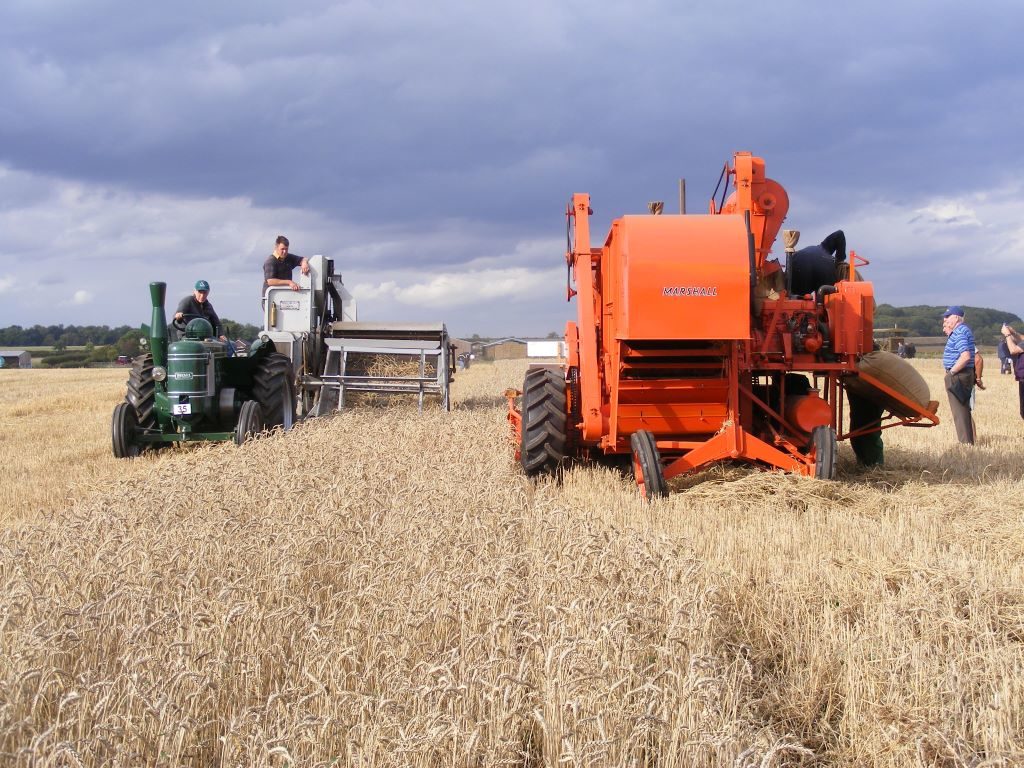Combines

In 1941 Marshalls sought permission from the Ministry of Supply to proceed with developing their own self-propelled combine and in 1943, the E7 nicknamed the “silver queen”, was introduced
Marshalls decided to develop the combine a stage further, but other commitments to fulfilling MoD contracts and developing the new Field Marshall tractor meant that it was not until 1945 that Marshall’s E9 self-propelled combine was introduced.
In 1947 Marshalls decided not to continue their development of the self-propelled combine but to develop a trailed combine. The 568 prototype made its debut at the Royal Agricultural Show at Lincoln but the design of the shaker meant that the machine struggled with British crops which were often tall in the stem resulting in blockages. Two other variants of the 568 were the 560 and 602.
With the introduction of the 626 trailed combine in May 1952, it seemed that all the problems that beset the old 568 range had been ironed out with a totally new design. To distinguish it from the old “silver queen” models it was finished in Fowler’s orange paint. Sales at first were good but by 1958 sales had slumped and a reduction in price did little to boost sales, with many unsold units remaining in stock. In the summers of 1955 and 1956 two self-propelled prototype combines based on the 626 trailed combine were put to work in remote areas of Lincolnshire. Feedback from the demonstrations was positive but comments were raised regarding the high fuel consumption and cost of running and servicing two engines. With the stark realisation that the combine could not be manufactured competitively, the project was eventually abandoned.